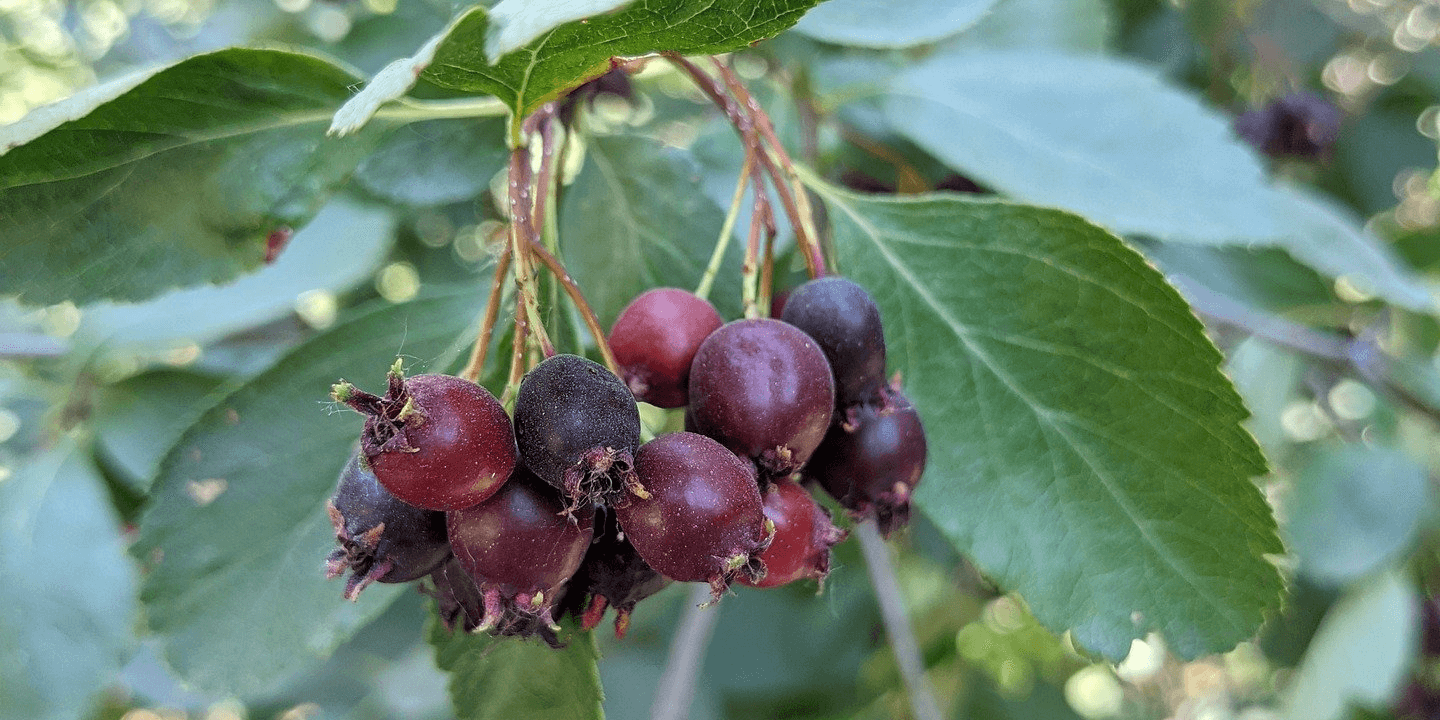When Are Juneberries in Season?
Juneberries, also known as serviceberries, are a delicious and nutritious fruit that are gaining popularity in the culinary world.
Juneberries typically bloom in early spring and are ready to harvest 45 to 60 days after that. They ripen to a dark purple color and look similar to blueberries. When they’re fully ripe, they have a mild and sweet taste that is perfect for eating fresh or using in recipes.
The exact timing of the Juneberry season can vary depending on your location and climate. In most parts of New York State, for example, the berries ripen in mid-June to early July. However, in warmer climates, they may be ready as early as May. Keep reading to learn more about when and where to find these tasty berries.
Seasonality Overview
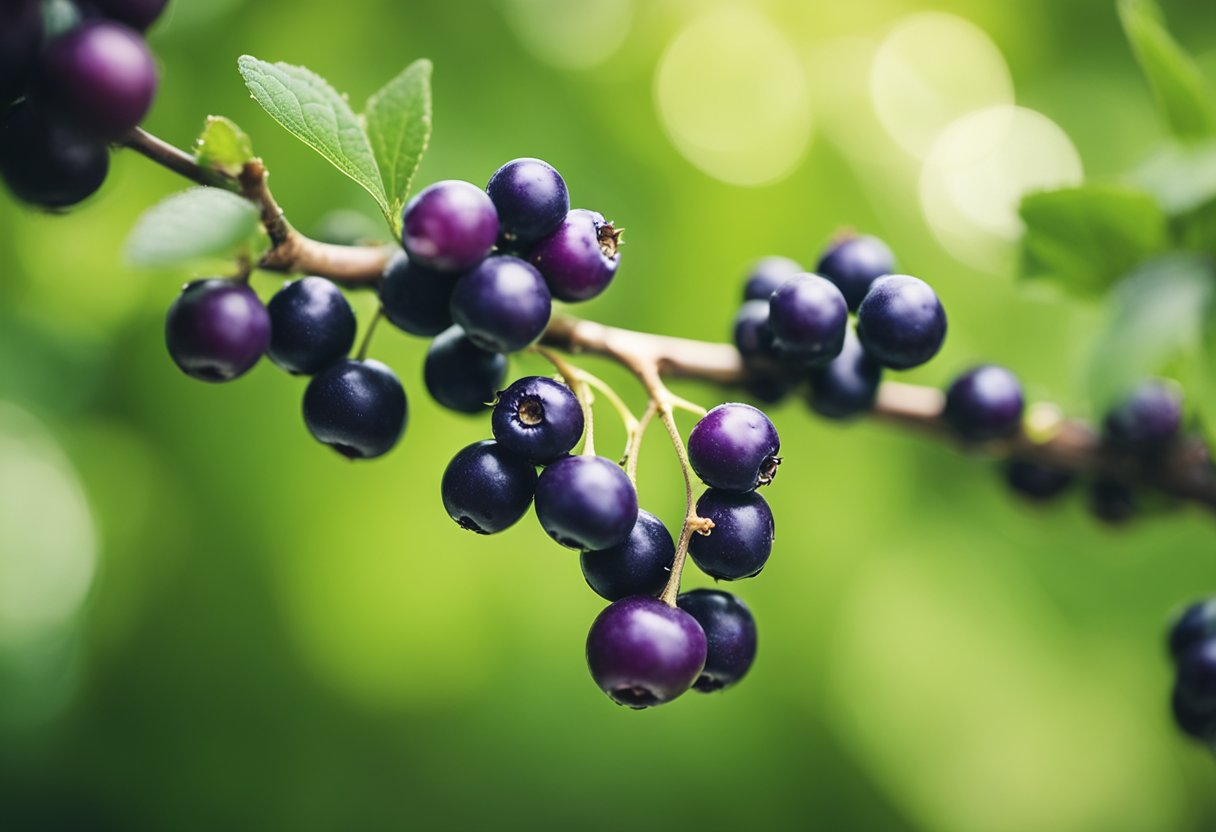
One of the great things about Juneberries is that they can thrive in a variety of climates and soil types. This means that they can be found in many different parts of North America, from the Northeastern United States to the Pacific Northwest and beyond.
When it comes to harvesting Juneberries, it’s important to wait until the fruit is fully ripe before picking it. The ripe berries will be a deep purple color and will come off the plant easily when gently tugged. If the berries are not yet ripe, they will be harder to pick and will not have reached their full sweetness.
Overall, if you are looking to enjoy the delicious taste of Juneberries, be sure to keep an eye out for them during the early summer months. Whether you are picking them yourself or buying them from a local farmer’s market, these tasty little berries are sure to be a hit with your taste buds.
Varieties and Availability
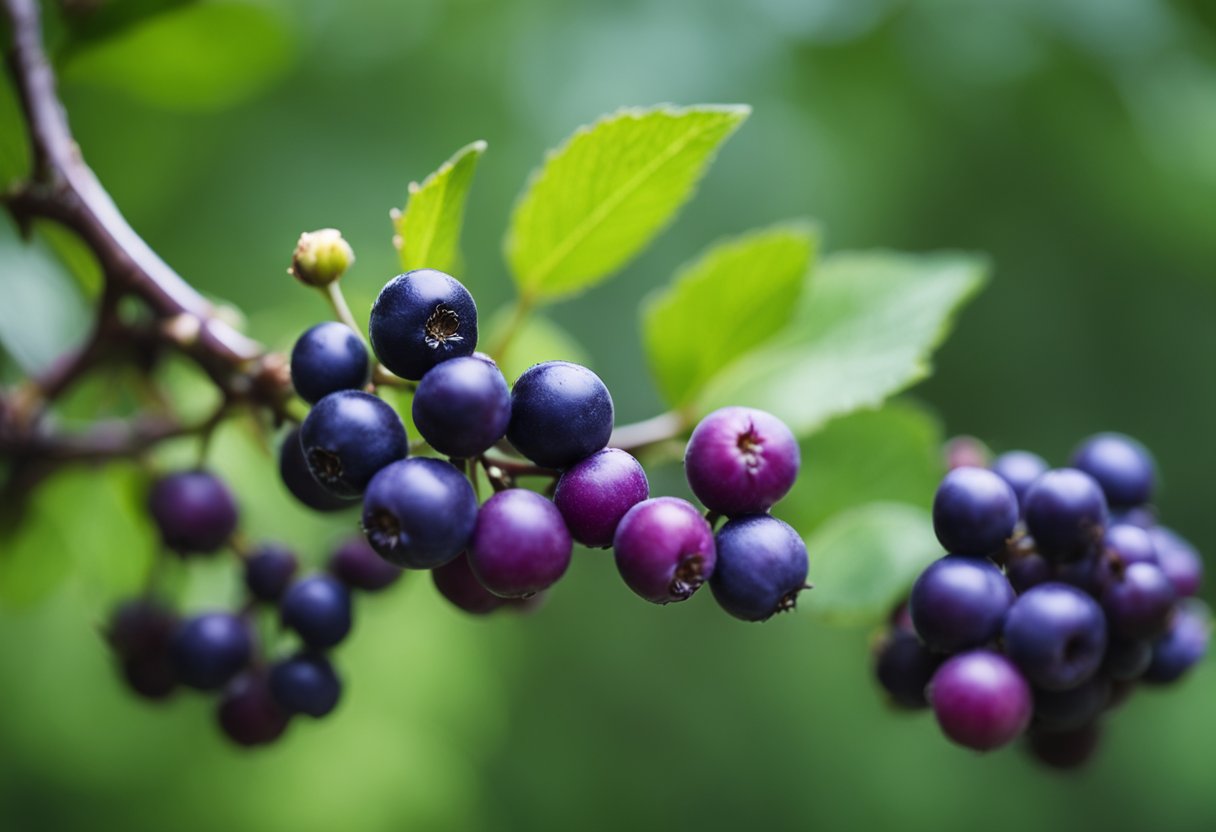
The availability of Juneberries can vary depending on where you live. In general, Juneberries are more common in northern regions of the United States and Canada. You can find them growing wild in forests, along roadsides, and in parks. They are also cultivated on farms, and some farmers offer u-pick options.
If you are interested in trying Juneberries, it is best to check with local farmers or markets to see if they are in season. Juneberries have a short growing season, typically lasting only a few weeks. Therefore, it is essential to act quickly if you want to enjoy this delicious fruit.
When purchasing Juneberries, look for plump, firm berries with a deep purple-blue color. Avoid berries that are soft, mushy, or have any signs of mold. Juneberries can be stored in the refrigerator for up to a week or frozen for later use.
Seasonality in North America
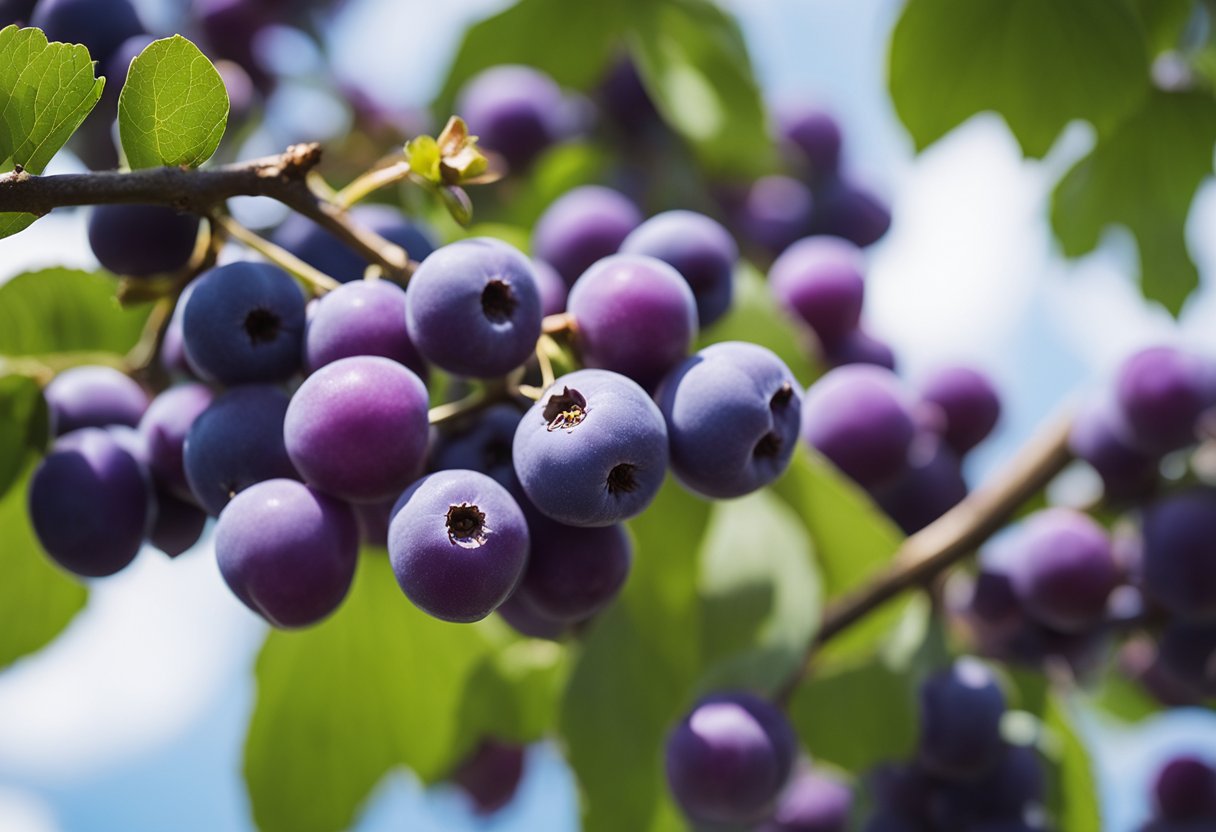
Juneberries are native to North America and can be found from coast to coast. The exact time for harvesting juneberries varies somewhat, but as a rule, the plants bloom in early spring, and the berries tend to be ready to pick sometime around June or July in most states.
Juneberries Seasonality for Each One of The US States
Here is a table that shows when juneberries are in season in each of the US states:
| State | Season |
|---|---|
| Alabama | May – June |
| Alaska | July |
| Arizona | May – June |
| Arkansas | May – June |
| California | May – June |
| Colorado | June – July |
| Connecticut | June – July |
| Delaware | June – July |
| Florida | April – May |
| Georgia | May – June |
| Hawaii | July – August |
| Idaho | June |
| Illinois | June – July |
| Indiana | June – July |
| Iowa | June – July |
| Kansas | June – July |
| Kentucky | June – July |
| Louisiana | May – June |
| Maine | June – July |
| Maryland | June – July |
| Massachusetts | June – July |
| Michigan | June – July |
| Minnesota | June – July |
| Mississippi | May – June |
| Missouri | June – July |
| Montana | June |
| Nebraska | June – July |
| Nevada | June |
| New Hampshire | June – July |
| New Jersey | June – July |
| New Mexico | May – June |
| New York | June – July |
| North Carolina | May – June |
| North Dakota | June |
| Ohio | June – July |
| Oklahoma | May – June |
| Oregon | June |
| Pennsylvania | June – July |
| Rhode Island | June – July |
| South Carolina | May – June |
| South Dakota | June |
| Tennessee | June – July |
| Texas | May – June |
| Utah | June |
| Vermont | June – July |
| Virginia | June – July |
| Washington | June |
| West Virginia | June – July |
| Wisconsin | June – July |
| Wyoming | June |
Note that these are approximate times and may vary depending on the weather patterns in each region. It’s always a good idea to check with local farmers or markets to find out when juneberries are in season in your area.

Seasonality in South America
The seasonality of fruits and vegetables in South America varies depending on the country and region. Some of the fruits that are in season during the summer months in South America include bananas, strawberries, wild berries, apples, melons, pears, peaches, and grapes. Vegetables that are in season during the summer months include asparagus, cabbage, onions, salads, eggplants, potatoes, peppers, and tomatoes.
In Chile, the harvest season for fruits and vegetables runs from October to March. In Argentina, the harvest season for fruits and vegetables runs from November to April. In Brazil, the harvest season for fruits and vegetables runs from October to March.
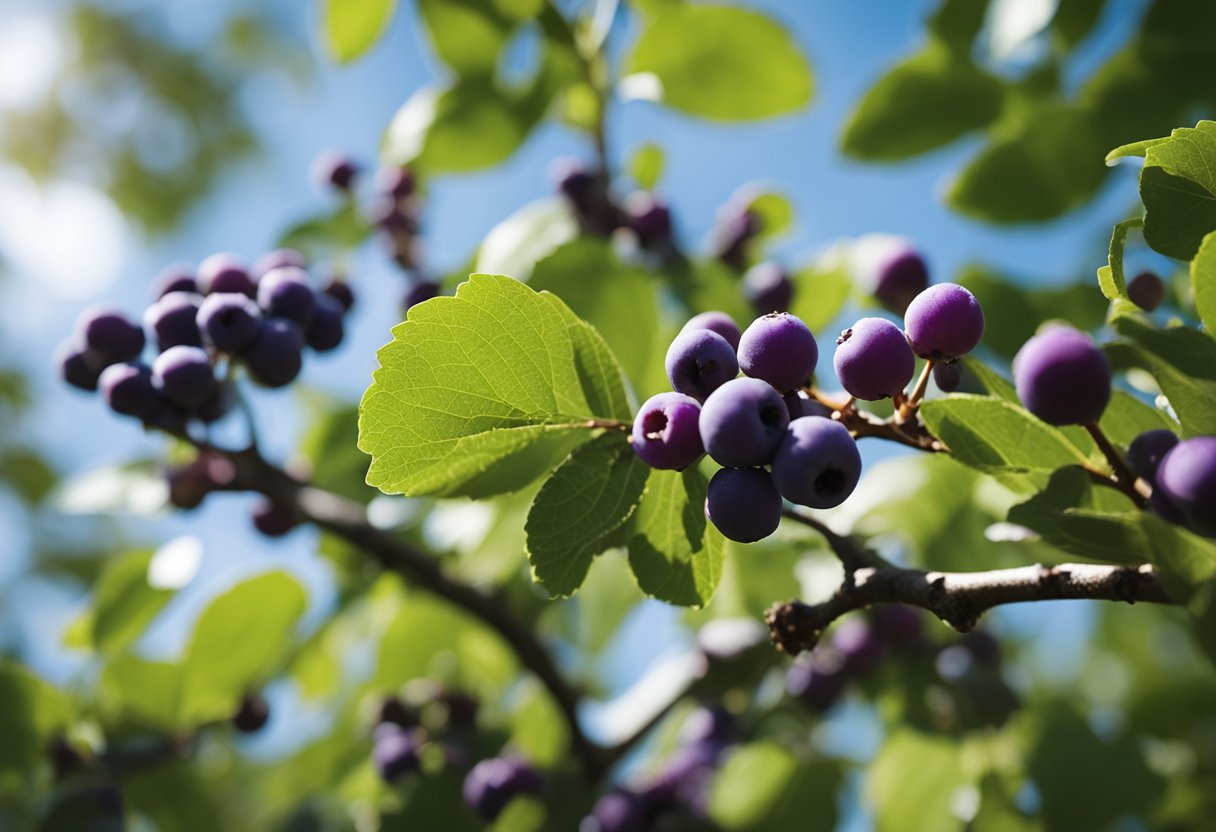
Health Benefits
Juneberries are not only delicious, but they also offer a range of health benefits. Here are some of them:
Antioxidants: Juneberries are high in antioxidants, which are compounds that protect your cells from damage caused by harmful molecules called free radicals. Antioxidants can help reduce your risk of chronic diseases such as heart disease, cancer, and Alzheimer’s disease.
High in Fiber: Juneberries are an excellent source of fiber, which is important for digestive health. Fiber can help prevent constipation, reduce your risk of colon cancer, and lower your cholesterol levels.
Good for Heart Health: Juneberries contain compounds that can help lower your blood pressure and reduce your risk of heart disease. They are also rich in potassium, a mineral that can help regulate your heart rate and keep your heart healthy.
May Boost Immune System: Juneberries are a good source of vitamin C, which is important for immune system function. Vitamin C can help protect against infections and may also help reduce the duration and severity of colds and other respiratory infections.
May Improve Brain Function: Juneberries contain compounds that may help improve brain function and reduce the risk of age-related cognitive decline. These compounds may also help protect against neurodegenerative diseases such as Alzheimer’s and Parkinson’s.
Anti-inflammatory Properties: Juneberries contain compounds that have anti-inflammatory properties. Inflammation is a normal response to injury or infection, but chronic inflammation can contribute to a range of diseases, including heart disease, cancer, and arthritis.
Incorporating Juneberries into your diet is an excellent way to enjoy their delicious flavor while reaping the many health benefits they offer.
